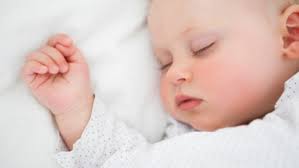In a town somewhere in Connecticut last year, a 6-month-oldboy was fed late one night. His mother fell asleep, and when she awoke, she assumed the baby had been put in his swing by his father, as was usual after the baby ate.
But the baby hadn’t been moved, and a few hours later, the parents discovered him swaddled tightly, face down in their bed.
The baby’s cause of death was classified as undetermined by the state Child Review Fatality Panel, which is charged with examining unexpected deaths of children under the age of 18 who have previously come into contact with state services.
But as State Child Advocate Sarah Eagan said at a recent legislative forum, babies “don’t just die from what we used to call crib death.” Amid the state’s tragic infant and toddler homicides and horrific cases of abuse, a sad number of infant and toddler deaths are entirely preventable simply by paying attention to the place that should be the safest, where they sleep.
Tragically, at least 18 times in Connecticut last year, babies such as the 6-month-old boy slipped from life for entirely preventable reasons.
 In July, the state Office of the Child Advocate released the 2014 Child Fatality Report, which examines the deaths of Connecticut’s infants and toddlers in the previous year. (The state legislative Committee on Children, chaired by Sen. Danté Bartolomeo and Rep. Diana Urban, waited until last month to hear the report’s findings, for fear that the information would be lost in the quieter summer months.)
In July, the state Office of the Child Advocate released the 2014 Child Fatality Report, which examines the deaths of Connecticut’s infants and toddlers in the previous year. (The state legislative Committee on Children, chaired by Sen. Danté Bartolomeo and Rep. Diana Urban, waited until last month to hear the report’s findings, for fear that the information would be lost in the quieter summer months.)
The report said that in 2013, at least 18 children from birth to 3 years old were found to have unsafe sleep environments. Most were boys, and the average age at death was 3 months.
“Every month there are babies who die in preventable ways,” Eagan told the legislative committee. “The deaths of so many children are not inevitable events.”
In fact, the report said Connecticut infants are more likely to die from unsafe sleep environments than they are from abuse, car accidents, choking, drowning, falls or any other source of accidental injury. Most common unsafe sleep environments include:
• Sleeping in an adult bed with parents or other siblings.
• Sleeping overnight in a car seat that is not in the car or in a crib with blankets or pillows.
• Sleeping while on their stomachs.
• Sleeping with a bottle.
As comforting – and practical – as sleeping with parents may seem, the practice is also being scrutinized by safety panels nationwide. Eagan said she was “astonished by the number of babies and toddlers throughout the state who died in preventable ways.”
Earlier this year, the state Department of Children and Families issued a policy regarding small children’s sleep environments, so staff members can help teach safe sleep practices, such as always placing a baby on his or her back for sleeping, even for naps. The policy reflects educational initiatives launched in other states such as California and New Jersey, though there are cultural and environmental forces that encourage so-called co-sleeping.
The babies-belong-in-cribs recommendations are echoed in a 2011 paper from the American Academy of Pediatrics, whose members studied sudden infant death syndrome, or SIDS, and expanded their guidelines for safe sleeping. In addition to placing an infant face-up to sleep (unless a medical condition prevents that), the recommendations include:
• Placing infants on firm surfaces meant specifically for sleep.
• Avoiding adult beds where mattresses may not be firm.
• Avoiding not just car seats, but swings for sleep, as well.
• Sharing rooms, not beds.